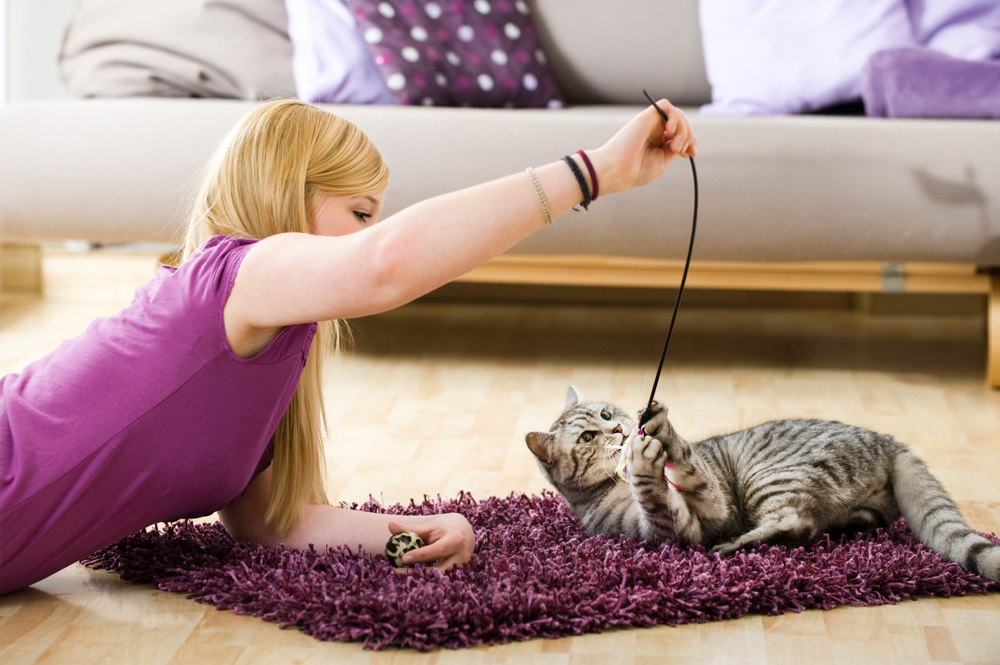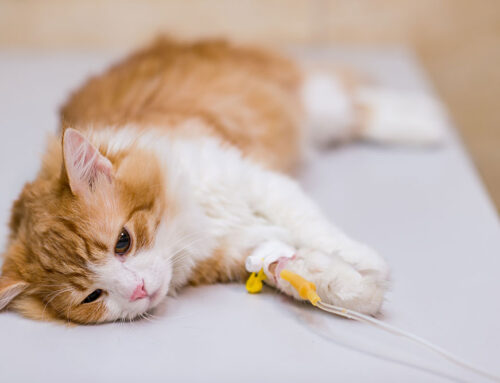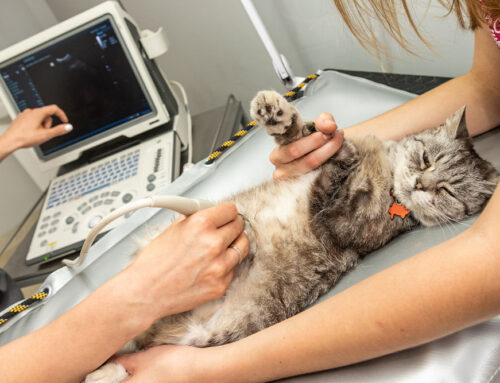Although our cats are domesticated pets, they still have a wild side. Similar to dogs, cats have natural, instinctive behaviors they need to perform to remain happy and healthy—dogs need to dig and sniff, and cats need to scratch and stalk. By helping your house cat exercise their behavioral instincts, you enable them to get the most of their indoor-only lifestyle, ensuring they receive ample physical and mental enrichment. Read our Burlington Veterinary Center team’s tips on how to encourage your cat’s need to express their true nature.
#1: Allow your cat to practice their predatory nature
Cats are natural predators who enjoy stalking, pouncing, and killing all manner of prey. To maintain your cat’s mental and physical health, they need to perform this behavior even though they have no need to hunt for their meals. You can help your cat remain true to their predatory instinct by identifying their preferred prey, and giving them plenty of hunting opportunities.
Your cat may prefer prey that look and act like:
- Rodents — A cat who prefers to hunt rodents may enjoy a plush or squeaking toy that feels similar to a mouse’s body, or an automated toy that zips around the room, mimicking a mouse’s movements.
- Bugs — Toys that skitter across the floor closely resemble bugs, and cats often have great fun pouncing on them. You can also tempt your bug-hunting cat to play with a laser light, a string with a knotted end, or dry food morsels scattered across the floor.
- Birds — To help fulfill your cat’s bird-hunting needs, tempt them with plush toys covered in feathers, or toys that chirp. In addition, you can suspend some toys from the ceiling, mimicking flying birds. If you see your cat always drooling over the birds at the feeder outside the window, toys that resemble birds may inspire them to exercise their natural instincts.
#2: Grow cat-friendly plants
Although cats are carnivores, your cat may enjoy nibbling plants, which may be beneficial to their health by providing antioxidants, vitamins, and fiber. If your feline friend is always chewing your nontoxic houseplants, grow them their own indoor garden filled with cat-friendly plants, such as wheat grass and catnip, which are relatively easy for anyone to grow. In addition, allowing your cat chow down on nontoxic plants may help deter them from eating the beautiful bouquets you may receive.
#3: Give your cat places to hide
Cats are a predator and prey species, and although your cat may appear to be a mighty hunter—especially when killing a catnip mouse—they have an innate instinct to hide safely should the need arise. Your cat feels safe and secure when they can hide in a cozy, dark spot to rest, or they may prefer to climb to their cat tower’s top and peek over the edge, surveying their territory. Provide your cat many hiding places in your home, so they can feel safe, and rest and relax without worry.
#4: Allow your cat to scratch appropriately
Scratching provides your cat the opportunity to practice nail care, stretch and exercise, and deposit scent markers (i.e., pheromones). When left to their own devices, your cat may choose inappropriate spots to scratch, such as your new leather sofa. Rather than have your cat maul your furniture, provide them appropriate scratching spots by placing scratching posts and mats in areas where your cat is likely to scratch, such as next to door frames, furniture, and windows. Provide your cat various scratching options, and identify which type they prefer. Most cats prefer vertical scratching posts covered in sisal material, but your cat may like another material and scratch-pad angle.
#5: Interact daily with your cat

Although cats are generally believed to need lower maintenance than dogs, they still require plenty of human interaction to remain happy. Content to snooze a large chunk of the day, your feline friend still wants to hang out occasionally with their favorite person. Not only does daily human interaction provide your cat mental stimulation, your presence also encourages them to get up and be active through training, grooming, and playing. Try teaching your cat to wave by batting at a feather wand, or to spin in a circle by following a treat. Brush your cat regularly to minimize hairballs and prevent matting. Identify which toys most entice your cat to play, then offer them on a rotating basis to create an invigorating, ever-changing play session with a robotic mouse, fishing pole toy, or plush animal.
In addition to ensuring your cat’s contentment by encouraging them to act on their natural instincts, keep them healthy through regular wellness care, such as receiving regular parasite prevention and up-to-date vaccinations. Contact our Burlington Veterinary Center team to schedule your furry feline friend’s physical exam, and help them stay healthy and happy.







Leave A Comment